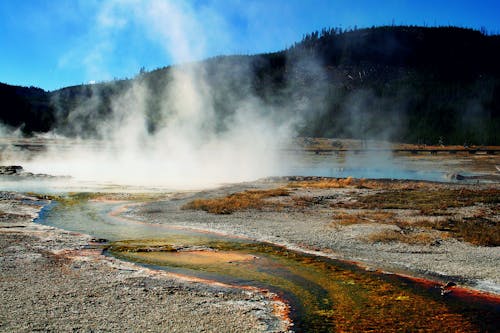If you have a relevant background in the oil exploration and drilling industry, you’d understand why you must be familiar with the many different kinds of drilling techniques. Like for instance, you need to know what makes sonic rig drilling work that major industry players prefer to use it over other available drilling methods.
Sonic drilling is a qualified technique to penetrate the soil. This ground penetration technique is sought out by companies when they need to drill into the ground for various purposes due to its friction-reducing quality that occurs both on the drill string and the drill bit due to inertia effects, liquefaction, as well as the temporary soil porosity reduction. The combination of all these factors makes it possible to have seamless penetration for many different kinds of soil quality.

Besides, this technique also makes the penetration rate in the vast majority of bedrock types faster.
Generating Sonic Vibration with the Drill Head
Drill heads normally house the oscillator, which is highly responsible for the generation of resonant, high-frequency energy. Usually, this is directed into the drill string. While drilling is in progress, the rotational movement is combined with resonant energy. By this measure, there is an even distribution of the energy and this will leave an impact on the drill string and drill bit of tooling.
Drill operators have full control over the intensity of sonic vibration that the drill head will generate. This will significantly help in matching up the required force needed in penetrating bedrock and soil formations.
Sonic Rig Mechanics
If you will try to engage a powerful drill head, you’re taking the entire drill string to a vibration frequency reaching as high as 150 Hz. This will induce the drill string and bit to lose hold of its structure. And with this, it will also reduce soil friction and drill cuttings so they become extremely loose to the point of assuming a liquified form. Thus, it can be flushed or removed easily from the borehole.
The drill bit vibrations will render the soil to significantly lose its porosity and density, and eventually its structure. By this measure, the soil and cuttings will get moved in the sample barrel as well as up the drill string, helping your tooling to freely advance on its own.
The inertia effects and liquefaction allows for the collection of continuous and long samples. And because of the presence of the high-frequency vertical movement, the odds are high that the drill string will be staying extremely straight yet with very little possibility of deflection.
Less power, fewer problems
Due to the reduced amount of friction that will likely occur on the drill string length, sonic rig drilling will require lesser amounts of power to achieve the exact or same drilling power as what can be witnessed from other traditional drilling methods. This is one attribute that is solely unique to sonic drilling and will help in keeping torsional forces to begin appearing on the drill string.
Another major benefit that can be enjoyed from applying sonic high frequency is how easy and seamless is the process of retrieving the drill string, even when working on quick expanding clays, boulders, and other similar but difficult or challenging conditions. All drilling rods, toolings, and casings can be pulled easier and way faster.
Sonic Drilling Means Clean Drilling
There are a handful of situations where you want to shy away from using air, drilling mud, or even water while drilling work is in progress. In a sonic type of drilling, they are not necessary. Hence, this is the reason why it is the most preferred geo-construction, environmental and geotechnical applications.
Environmental projects will also enjoy significant savings on their costs if they will take advantage of the sonic type of drilling method. These kinds of drilling projects necessitate a good amount of time and money so that project managers will be able to properly dispose of their investigation derived drilling waste.
Also, in every mining project, there is a leach pad. If you add air or water it is going to be a disturbance and may influence the soil’s mechanical properties. Under extreme cases, doing so may bring about the possibility of erosion which can pave the way for failure of drilling operations such as a partial landslide.

